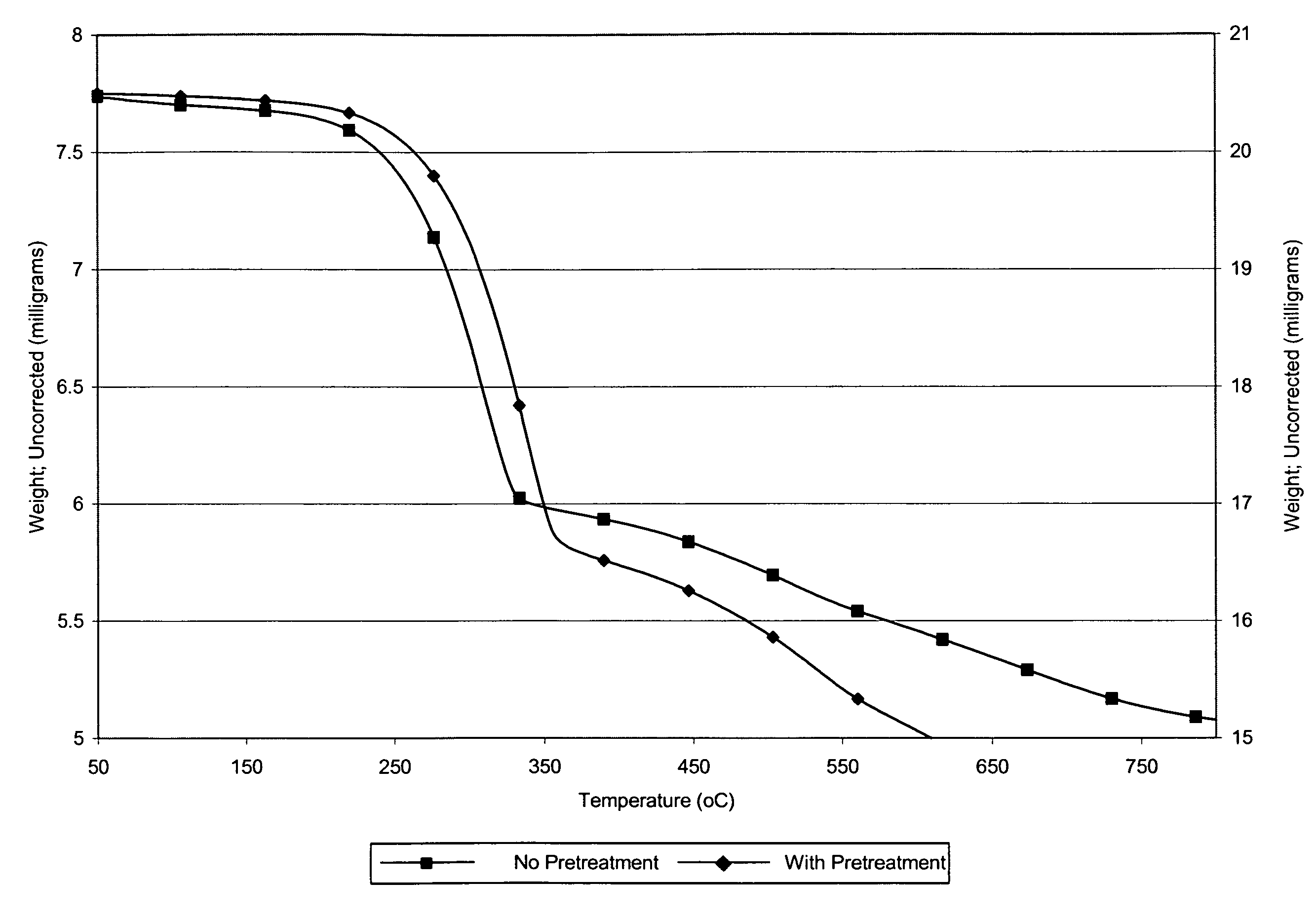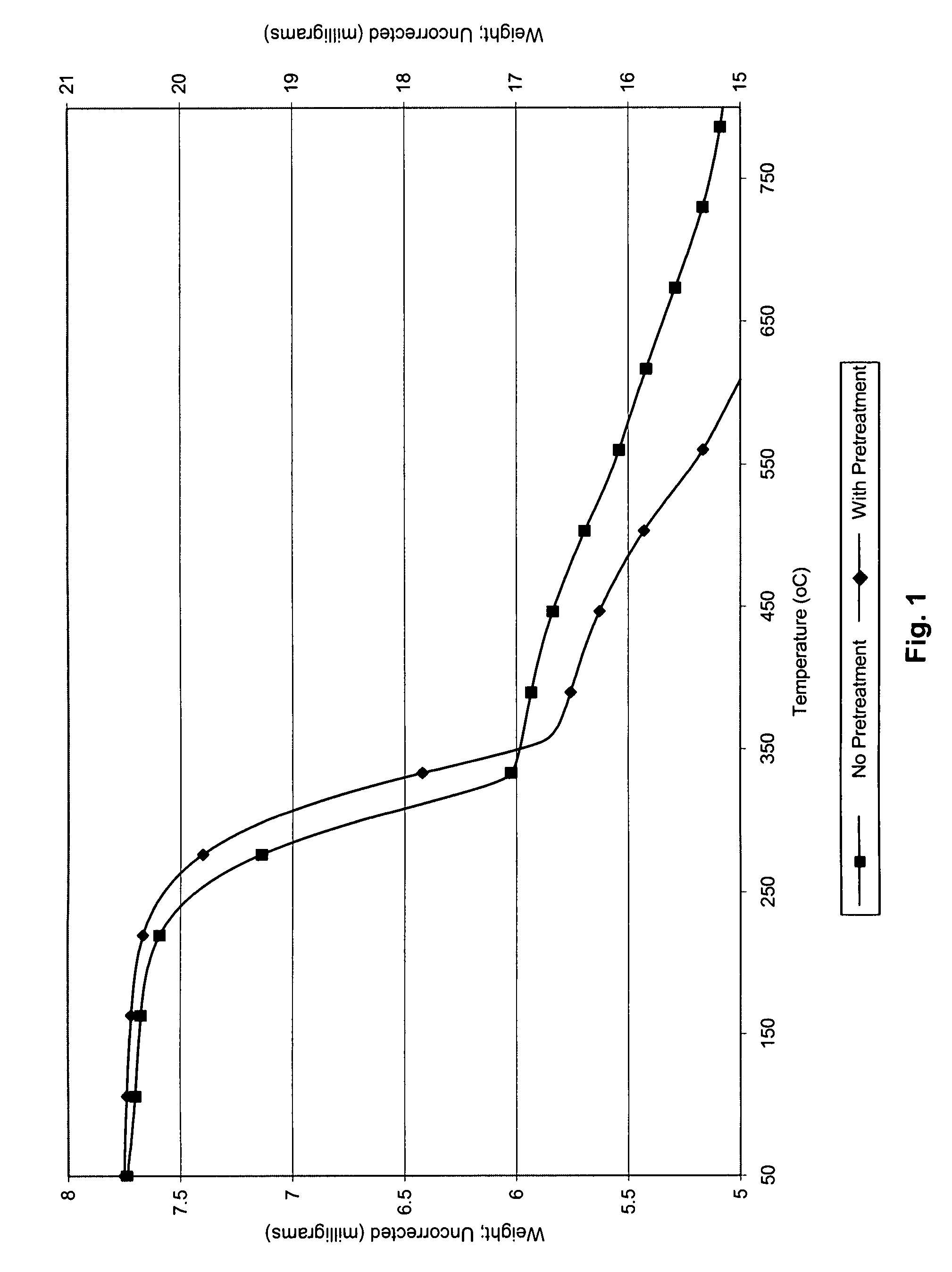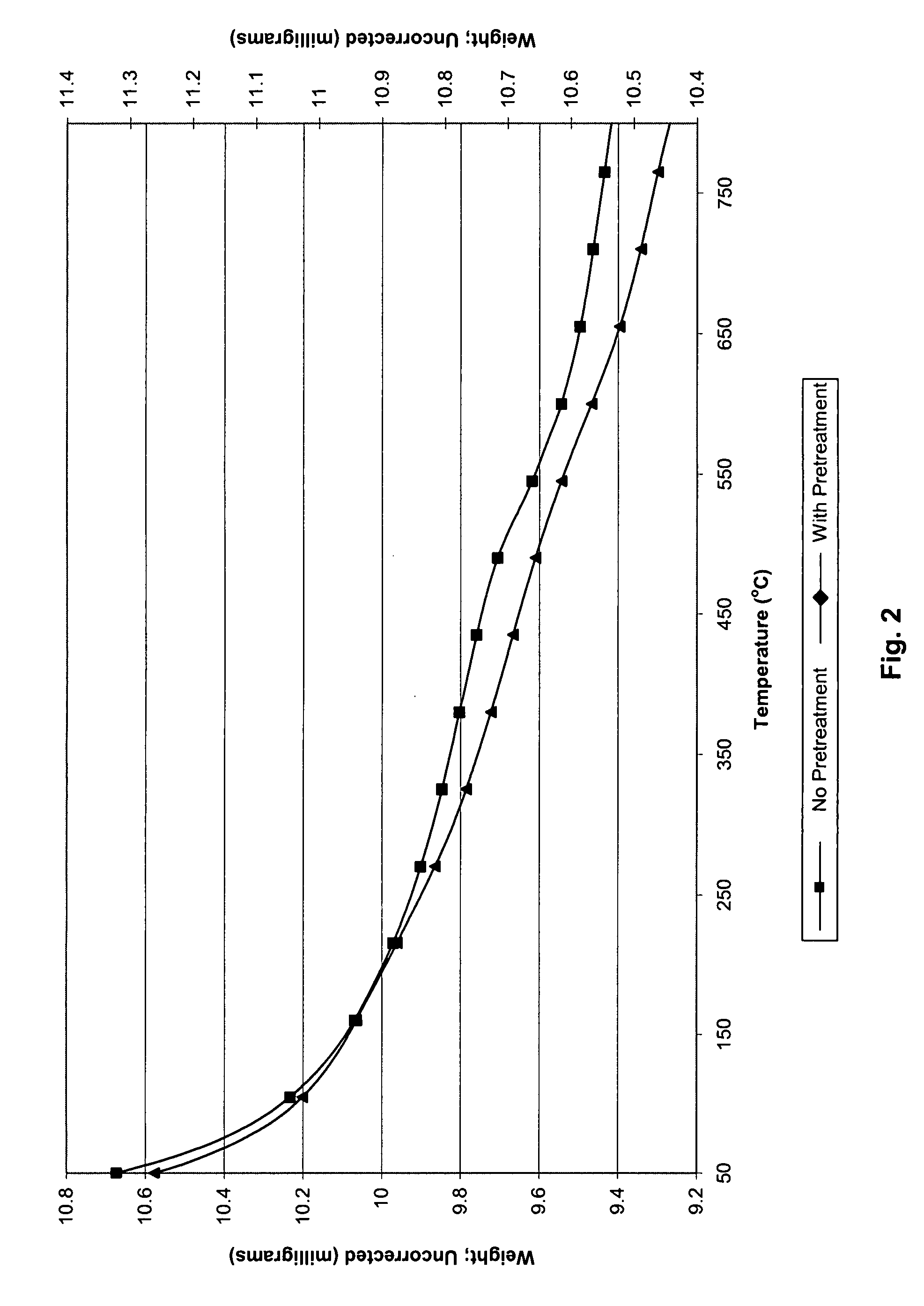Process for reduction of inorganic contaminants from waste streams
a technology of inorganic contaminants and waste streams, applied in the field of inorganic contaminants from waste streams, can solve the problems of mercury exposure, mercury and arsenic, mercury emissions from coal-fired utilities, commercial boilers and solid waste incinerators, and mercury exposure has been associated with neurological and developmental damage in humans, and achieves cost savings
- Summary
- Abstract
- Description
- Claims
- Application Information
AI Technical Summary
Benefits of technology
Problems solved by technology
Method used
Image
Examples
example 1
Removal of Mercury from Liquid (Aqueous) Samples
[0064]The removal of ionic mercury(II) using used alumina was demonstrated using laboratory synthesized aqueous metal-tainted solutions. The solutions were prepared at two levels of mercury(II): 1 ppm and 10 ppm. Spent alumina samples (AA-199, AA-246, AA-222, AA-191, Metaloy) were used as sorbents for the liquid phase experiments. These sorbents were reclaimed from Claus catalyst processes. Used alumina was first dried by placing the sorbent in a drying oven, at 100° C. for approximately four hours. After drying, seven samples of sorbent were weighed. The samples were 0.1 g, 0.25 g, 0.25 g (two samples for precision), 0.5 g, 0.75 g, 1.0 g, and 1.5 g. The sorbent was added to the simulated waste sample (100 mL) and the contents of each bottle were manually swirled (1 minute) to assure complete wetting of all of the sorbent. Two control samples were also prepared. The first control contained no sorbent. The second control sample included...
example 2
Removal of Mercury from Gas Samples
[0070]In this prophetic example, used alumina (Claus catalyst) sorbents will be screened using an on-line mercury analyzer, which allows monitoring of outlet mercury concentration from the reactor in real time, thereby reducing the extensive number of tests that need to be performed in order to determine when equilibrium has been achieved. Because the oxygen present in simulated flue gas interferes with the on-line analysis, the screening will be performed using either nitrogen or argon carrier gas. The sorbents will be tested in range of 70° C. and 150° C. The amount of mercury sorbed on the sorbents will be determined by CVAA spectroscopy, by leaching the mercury off the sorbent.
[0071]After the initial screening tests, additional tests will be conducted using simulated flue gas, which requires a batch sampling method using impingers (Ontario Hydro Method, known to those of skill in the art). Three tests at different contact time periods will be p...
example 3
Removal of Mercury from Gas Samples—Experiment #2
General Procedure
[0072]In this prophetic example, an elemental mercury (Hg0) permeation tube (3 cm, Vici Metronics, Inc) is used to steadily provide Hg0vapor into the system. The Hg0is introduced into the system using nitrogen at a flow rate of about 100 mL min−1 as a carrier gas, which is passed over the permeation tube. The carrier gas flow rate is maintained with the use of a mass flow controller (MFC). Release of Hg0vapor at a rate of 91 ng min−1, (11 parts per billion by volume inlet Hg0 concentration) is achieved by immersing the permeation tube in a temperature-controlled water bath (about 55.5° C.). The influent Hg0 vapor concentration is repeatedly measured with 4% (w / v) KMnO4 / 10% (v / v) H2SO4 impinger solutions.
[0073]Simulated flue gas is chosen from one of two types: bituminous coal and Powder River Basin (PRB), based on the type of coal that is present. Bituminous coal results in a higher percentage of oxidized mercury, wh...
PUM
| Property | Measurement | Unit |
|---|---|---|
| pH | aaaaa | aaaaa |
| flow rate | aaaaa | aaaaa |
| flow rate | aaaaa | aaaaa |
Abstract
Description
Claims
Application Information
 Login to View More
Login to View More - R&D
- Intellectual Property
- Life Sciences
- Materials
- Tech Scout
- Unparalleled Data Quality
- Higher Quality Content
- 60% Fewer Hallucinations
Browse by: Latest US Patents, China's latest patents, Technical Efficacy Thesaurus, Application Domain, Technology Topic, Popular Technical Reports.
© 2025 PatSnap. All rights reserved.Legal|Privacy policy|Modern Slavery Act Transparency Statement|Sitemap|About US| Contact US: help@patsnap.com



